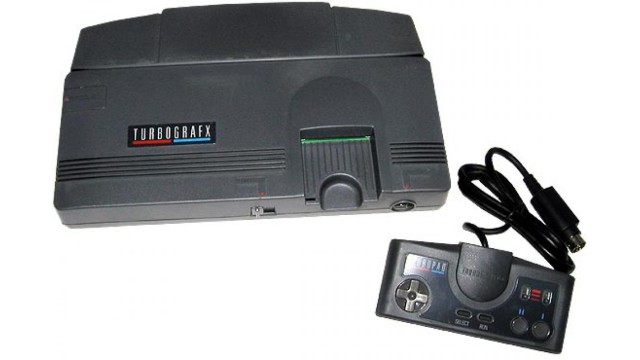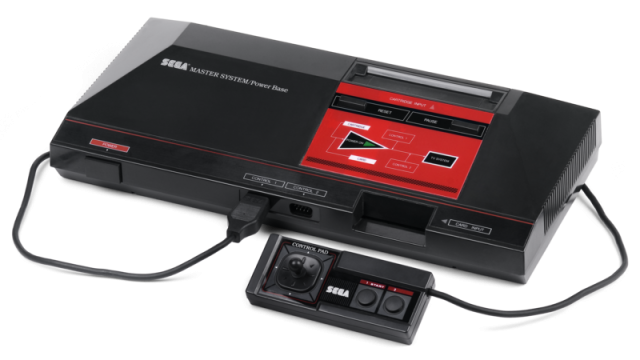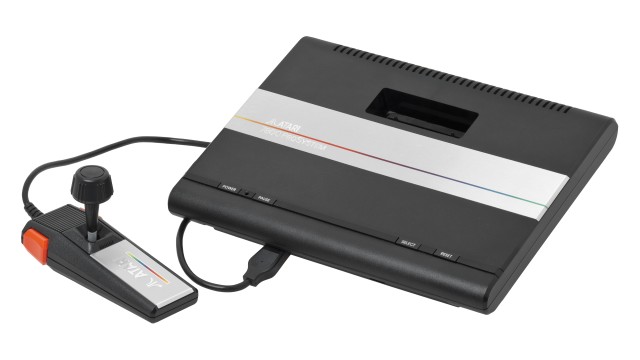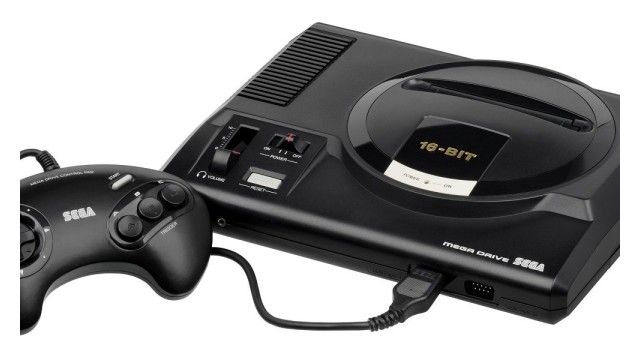
Turbografx
Launches: 1987
Discontinued: 1994
Life span: 7 years
Units sold: 10 000 000
Generation: 4th
Country releases of Turbografx
 Japan: Japan: | Oct/1987 | ||
 USA: USA: | 29/Aug/1989 | ||
 France: France: | 22/Nov/1989 | ||
 Spain: Spain: | Dec/1989 | ||
 United Kingdom: United Kingdom: | Dec/1989 |
 Turbografx technical specifications
Turbografx technical specifications
CPU: Hudson Soft HuC6280 (8 bits)
Memory: 8 KB
 Turbografx video specifications
Turbografx video specifications
Turbografx graphics capabilities.
Video chip: (16 bits)
Video connection:
 Turbografx audio specifications
Turbografx audio specifications
Turbografx sound capabilities.
Audio chip:
Audio mode:
 Controllers of Turbografx
Controllers of Turbografx
 Turbografx games support
Turbografx games support
Support:
Turbografx games
Games library: 144
Turbografx story
The NEC TurboGrafx-16, also known as the PC Engine in Japan, is a notable entry in the history of video game consoles, representing a significant moment of innovation and competition in the mid-1980s gaming market. Its story begins with NEC’s ambition to break into the rapidly growing home console market with a system that could deliver advanced technology and high-quality gaming experiences.
The creation of the TurboGrafx-16 was driven by NEC Corporation’s desire to leverage its expertise in electronics and computing to produce a competitive gaming console. By the mid-1980s, NEC had already established itself as a major player in the computing industry, and the company saw an opportunity to apply its technological prowess to the home gaming sector.
The goal was to develop a console that could stand out in a crowded market, where established players like Atari and Nintendo were already dominating. NEC aimed to create a system that offered superior graphics and sound, leveraging cutting-edge technology to provide an appealing alternative to existing consoles.
The development of the TurboGrafx-16 involved several key innovations that set it apart from its competitors. The console was designed around the HuC6280 CPU, an 8-bit processor that was paired with a dedicated graphics chip, the HuC6270. This combination allowed the TurboGrafx-16 to deliver impressive visuals and smooth scrolling, features that were particularly notable compared to other home consoles of the time. The decision to use a custom graphics chip and a dedicated sound processor was aimed at providing a more advanced and immersive gaming experience. Additionally, the TurboGrafx-16 utilized a compact disk format for its games, which was a relatively novel approach compared to the cartridge-based systems prevalent at the time.
The TurboGrafx-16's development also focused on creating a strong lineup of games that could showcase the console’s capabilities. NEC worked closely with game developers to produce a variety of titles across different genres, including action, adventure, and puzzle games. The console’s hardware allowed for detailed graphics and rich audio, which were expected to attract gamers looking for a more sophisticated gaming experience. The TurboGrafx-16 was designed to be both powerful and affordable, with the aim of offering high performance at a competitive price point.
The launch of the TurboGrafx-16 occurred in 1989, and it was introduced to the North American market as a direct competitor to other popular consoles of the time, such as the Sega Genesis and the Super Nintendo Entertainment System (SNES). The console was marketed with a focus on its advanced graphics and sound capabilities, positioning itself as a next-generation gaming system that could deliver a superior experience compared to its rivals.
The launch was supported by a series of promotional campaigns and advertisements that highlighted the TurboGrafx-16’s technological innovations and its library of games.
Despite these efforts, the market reception of the TurboGrafx-16 was mixed. In North America, the console faced significant challenges in competing with the more established Sega Genesis and SNES. While the TurboGrafx-16 was praised for its technical achievements, including its advanced graphics and sound, it struggled to gain a substantial foothold in the market. One of the key factors was the limited availability and marketing of its game library. The TurboGrafx-16 launched with a relatively modest selection of titles compared to its competitors, which affected its ability to attract a broad audience.
Additionally, the North American market was highly competitive, and both the Sega Genesis and SNES had already established strong market positions by the time the TurboGrafx-16 was introduced. The TurboGrafx-16’s pricing strategy, while competitive, could not fully overcome the market dominance of these established systems. The console’s promotional efforts and technological advantages were not enough to sway many gamers, who were already invested in the Genesis or SNES ecosystems.
In Japan, however, the PC Engine (the Japanese version of the TurboGrafx-16) experienced more success. The PC Engine was launched in 1987 and quickly gained popularity due to its advanced technology and strong library of games.
The console was well-received by Japanese gamers, who appreciated its compact design and impressive performance. The PC Engine became known for its diverse and high-quality game library, which helped to establish it as a prominent player in the Japanese gaming market.
Despite its relatively limited success in North America, the TurboGrafx-16 remains an important part of video game history. It represents a bold attempt by NEC to innovate and compete in the rapidly evolving home console market. The console’s technical achievements, including its advanced graphics and sound capabilities, contributed to its reputation as a cutting-edge system. Additionally, the TurboGrafx-16’s success in Japan demonstrated that there was a market for more advanced gaming systems, and it helped to pave the way for future innovations in the gaming industry.
In retrospect, the NEC TurboGrafx-16 and its Japanese counterpart, the PC Engine, are remembered as pioneering systems that introduced several key technological advancements to the home console market. While the TurboGrafx-16 faced challenges in North America, its legacy endures as a testament to NEC’s ambition and innovation in the early days of video gaming.
Next NEC console: PC-FX



